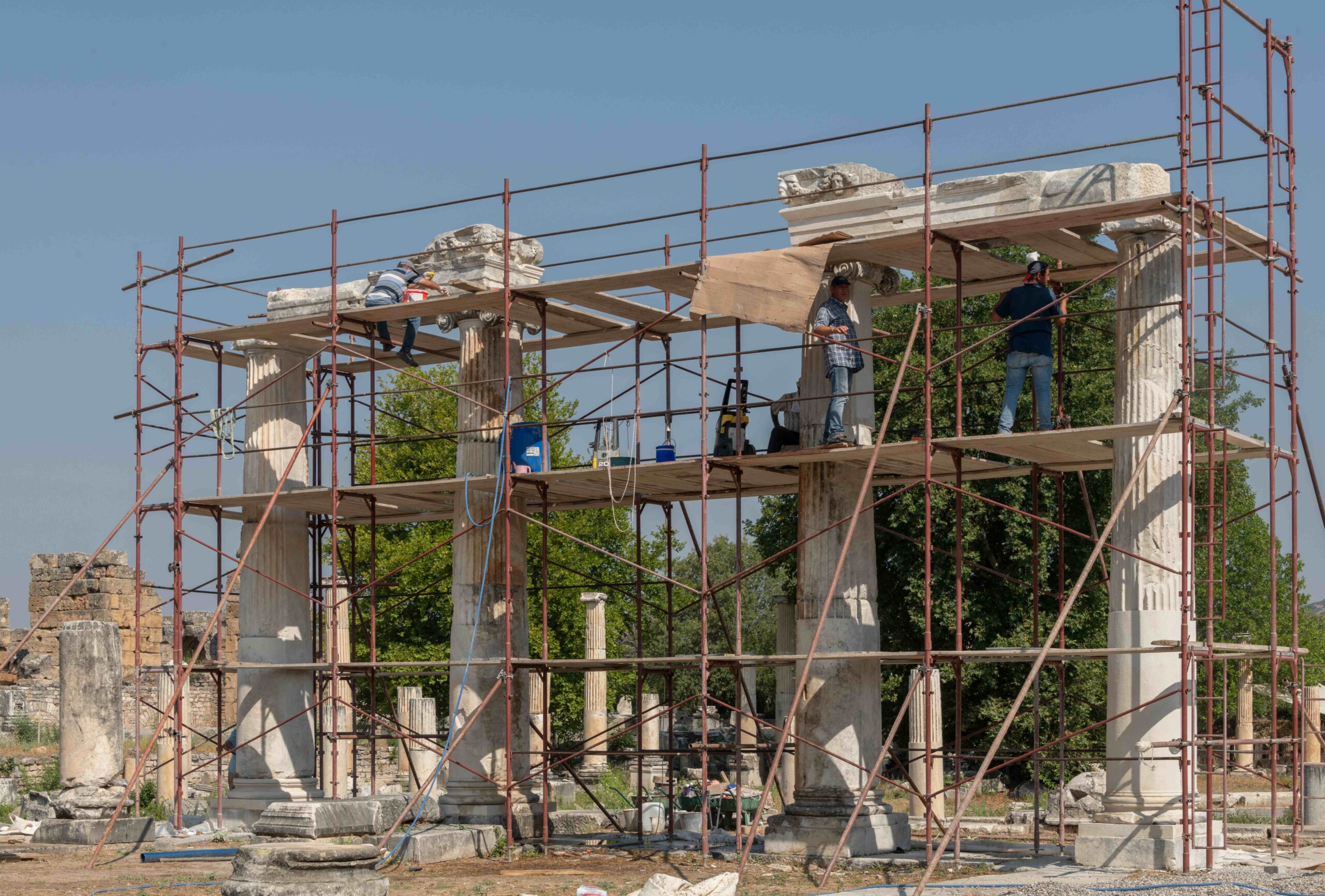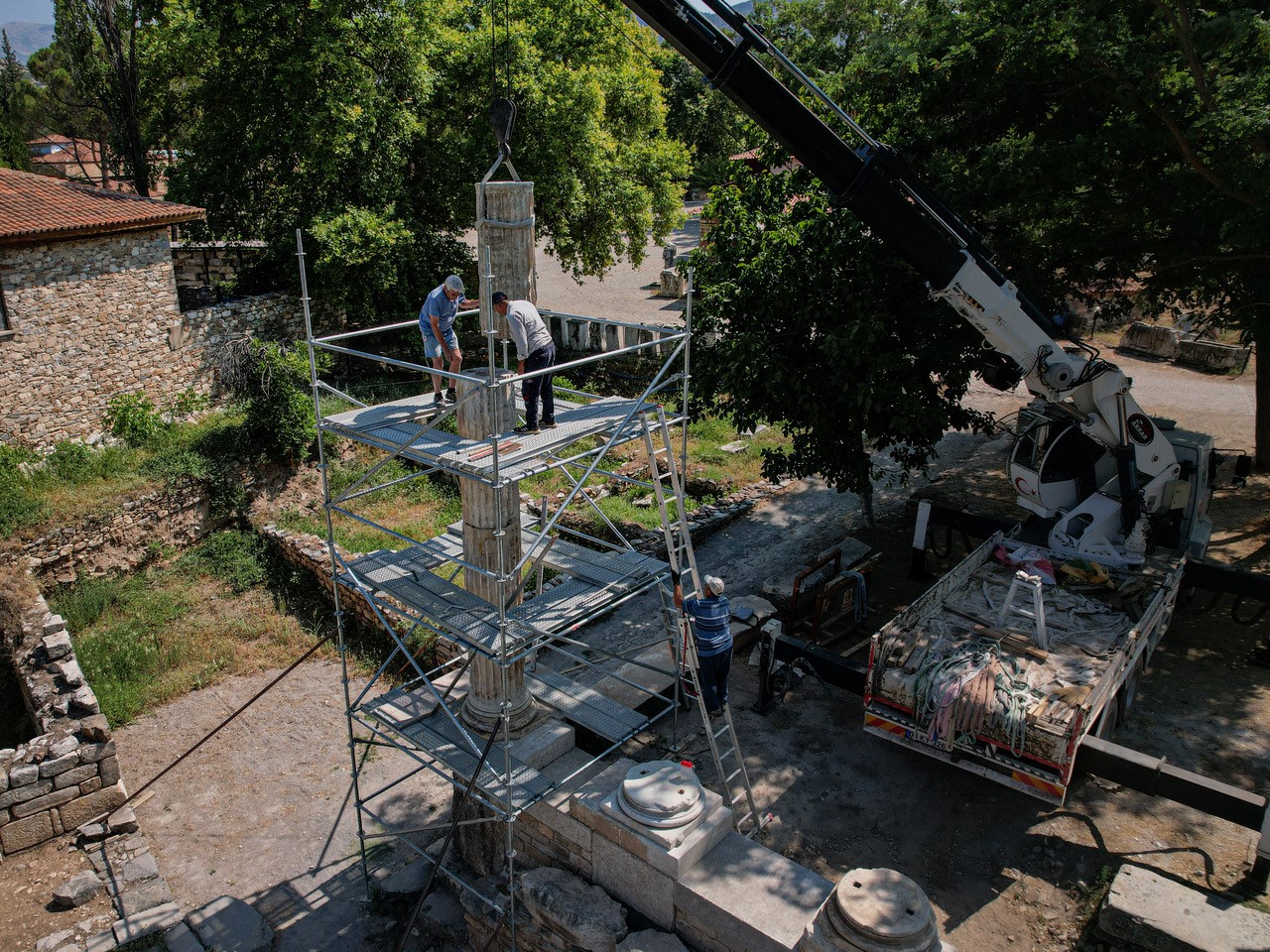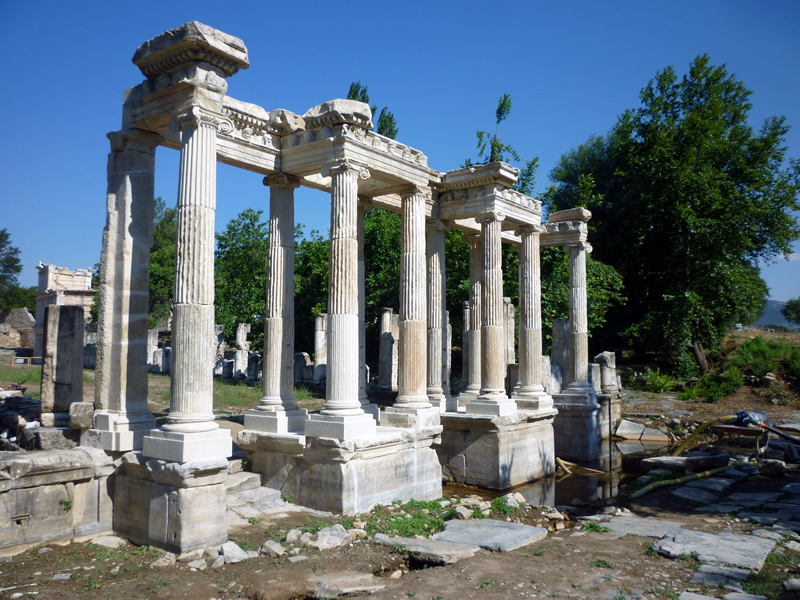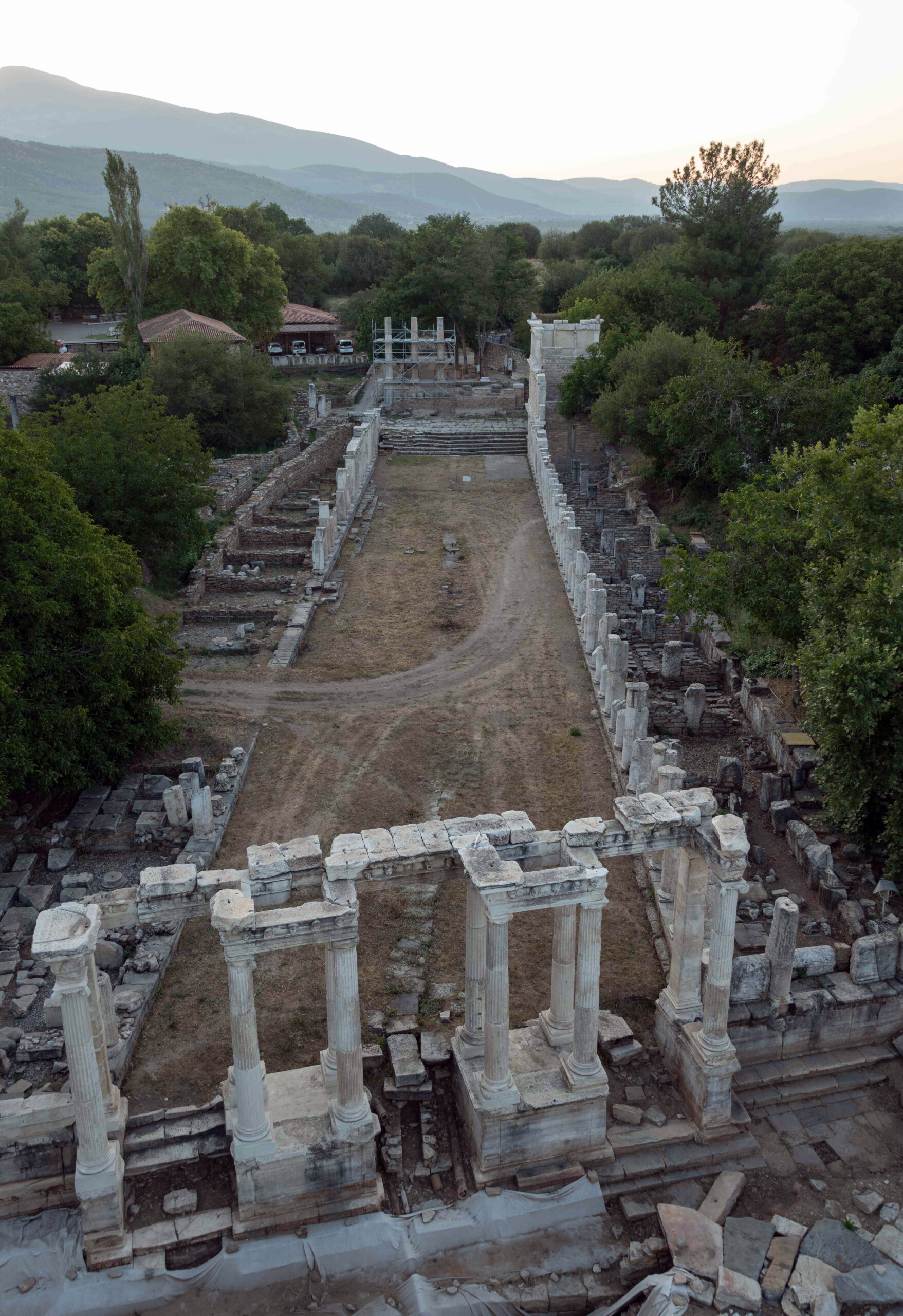Anastylosis
Anastylosis is the precise stone-for-stone restoration of an ancient building and requires intensive study and trial-and-error testing to determine the one original position of each block. The process not only leads to iconic landmarks that help visitors to understand and enjoy the ancient site but also provides much valuable information about the working practices of ancient architects and builders. Aphrodisias has several buildings sufficiently well preserved to have allowed such anastylosis: the Tetrapylon (1983-90); the east end of the Sebasteion’s South Building (2000-2012); the Doric logeion of the Theatre (2011-2012); and the Propylon of the Sebasteion complex (2012-15).
The most recent anastylosis projects are the following:
(1) BASILICA. The anastylosis of the four colossal double-columns and their entablatures at the entrance to the Civil Basilica is part of a larger project to enhance and partly restore the front of this huge public building (145 x 30 m) as it joins the Urban Park to its north. The project includes the presentation of the complete text of Diocletian’s Edict of Maximum Prices (in Latin, Turkish, and English) on panels installed on the line of the building’s side walls. The project is sponsored by Murat Ülker and pladis.

(2) SEBASTEION TEMPLE. A project was begun in 2021, to study and restore parts of the Corinthian temple that stood at the east end of the Sebasteion, focused on part of its columnar façade that faced down the long avenue in front of it. The temple stood on a tall podium and was dedicated to Livia and Tiberius: it was the culmination of the whole Sebasteion complex. An anastylosis of three full columns in their correct positions to their full height has been completed (2023). It has re-created an important aspect of the Sebasteion’s original architectural effect: the temple façade matched the height of the adjoining North and South Buildings (14 m) and ‘closed’ the sacred space of the sanctuary.
The temple had been transformed in late antiquity, by the removal of all the building behind the columnar façade and the substitution of a fountain basin against the front of its podium in place of its original access stairway. The anastylosis is of this late antique phase, of a Corinthian columnar screen that continued to function as a city landmark in a complex now transformed into a commercial facility. The project is sponsored by Caroline Koç.









